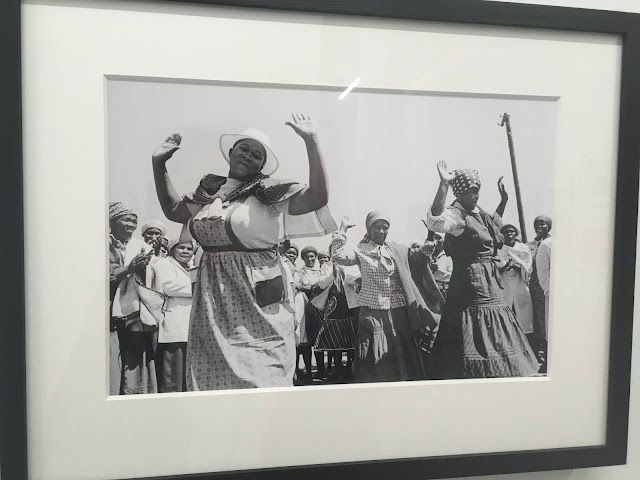I've been chosen as the writer in residence as the Arnolfini art gallery, Bristol, to create a body of texts along their exhibition, 'Still I Rise', on feminisms, gender and resistance.
Here is the first text:
‘Still I Rise’ – Arnolfini – By Melissa Chemam
-
Episode 1: The Stories Women Carry
Some strangely powerful forces brought me to Bristol over and over again in these past five years, after a decade between Paris, Prague, Miami, London, East and Central Africa. My first week reporting here, in 2015, could have been the last, really. But I found some sense in this place, a bit more than in all the others. Since then, I’ve built a profound relationship with the city and some of its inhabitants.
And one of the first institutions I visited in Bristol was the Arnolfini Gallery, in February 2015. I have since come again dozens of times… But walking through the rooms of ‘Still I Rise’ is a particular endeavour for me. This exhibition especially mirrors many of my experiences, over 15 years on the road as a journalist. Also as the daughter and granddaughter of freedom fighters, as one of first women to go to university in my family, the first one to vote, to decide if I would marry or not… saying that this collection of art work means a lot to me is an understatement.
Russian dolls of memories
Looking at the photographs by Pamela Singh or the paintings by Monica Sjöö, I first got to think of all the women whose role has been taken for granted for so long: the mothers, nannies, friends and wives, supporters of others, usually “action men”, heroes of the daily life. But have you seen the placards about domestic labour in the first room? Those ones yes, these women… preparing your lunch for school, ironing your shirts before work, the ones working for no income.
Resistance is the third substantive associated to ‘Still I Rise’, after feminisms (plural) and gender. But it may be the most important. Or is it to me especially? Resistance is at the core of feminism and any activism. Whether women resisted unfairness and mistreatment, or protested to gain civil rights. Sometimes just to defend their rights to act womanishly in a men’s world.
Over the years, I met many of these women, on five continents, Africa, Europe, North America, the Middle East, Asia. These memories are often with me. Yet, they came back powerfully while I was walking these afternoons spent in the Arnolfini with the women of ‘Still I Rise’.
Some of the pieces of art exhibited here reminded me of this dry, hot and “shadow-less” Samburu village I visited a few years ago in the middle of Kenya, where I met with this group of women who had left their home and their men… Known for their colourful dressed and jewels, these Samburu women had to create a new hamlet for themselves and their children without their husbands, because these were too hurtful and too exploitative, delegating all the workload on women, beating them on top. Talking about resistance…
The photographs exposed here recalled the strength of Dr Juman, an Iraqi gynaecologist I met near Erbil, who left her comfortable home in the United States to go back to her native Kurdistan, in Northern Iraq, and help women and children in camps for people displaced by war. The photos also reminded me of the Yezidi women I met in a camp in Nineveh, forced to leave from village to village by this 15-year old war in Iraq.
The posters and placards reminded me of the Turkish and Kurdish women I followed in March 2015 in Istanbul, for International Women’s Day, protesting for the right to express their political view in Erdogan’s repressive Turkey. Much closer to us here, they reminded me of the women I interviewed in November 2016 in Belfast, fighting for their abortion right, that women in the rest of the United Kingdom and Europe have had for decades by now…
I could go on and on…
The films I saw here reminded me of the women I photographed in Cité Soleil, the largest slum in Haiti’s capital Port-of-Prince, fighting every day to feed their family with less than a dollar a day.
Writing as an act of resistance
To me, meeting all these different types of “feminists” to write their story was my form of resistance.
The historical documents about the experience of wedlock reminded me of young ladies I saw in Southern India, still not allowed to choose their future husband. But they also reminded me of my own grandmothers, whom I hardly knew, and had to take care of their many children during wartime, the men being away, resisting the colonial forces…
Hence, I became the first woman in my family able to travel this far out, to report freely and to be completely independent. Writing all these stories finally brought me to Bristol, a city with a long history of protests and resistance, against the slave trade firstly, then against multiple oppressors.
Now the main power I have to resist is my writing. It’s hard most of the time. But what comforts me is that I’m never doing this for me only. These are stories of many others so as long as we share them they have a power to add a contribution to our collective resistance.
That’s the road I’ll explore further with this series of texts until January…
-
Melissa Chemam


Enjoyed reading this Melissa. Glad you've been offered a stop-over on this long road of resistance, with the right conditions for writing. Looking forward to part II.
ReplyDeletethanks, who ever you were!
Delete